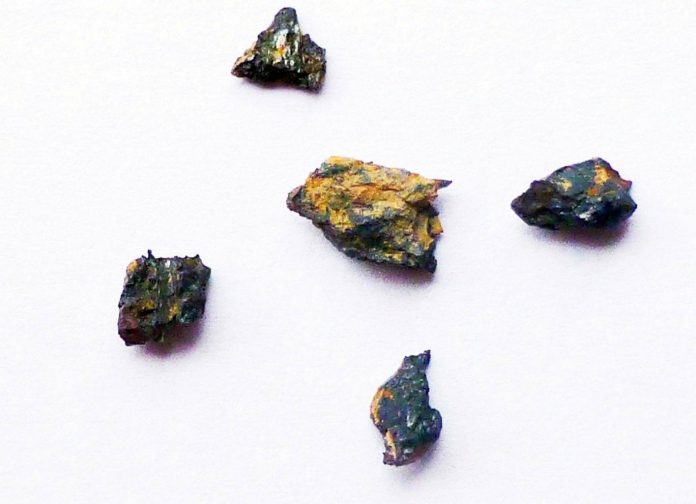A small extraterrestrial pebble, which was previously discovered in south-west Egypt, continues to baffle scientists as it has been found to contain micro-mineral compounds that are apparently not from the solar system.
The Hypatia stone, as it is called, does not come from Earth. It contains micro-mineral compounds that don’t come from our planet, or any known type of meteorite. In fact, the compounds aren’t known to occur anywhere in our solar system and this raises questions about the formation of our own planet.
The extraterrestrial origin of the Hypatia stone was first announced in 2013, when scientists analysed the pebble, picked up from the Libyan Desert Glass Field and named it after the ancient astronomer, Hypatia of Alexandria.
In 2015, that finding became more interesting when further analysis found that the diamond-rich stone was unique amongst extraterrestrial materials; not like any known meteorite or comet.
Now, a study from the University of Johannesburg, published in Geochimica et Cosmochimica Acta, has found a lack of silicate minerals in the stone, setting it apart further from material found in our solar system. The researchers compare the pebble to a fruitcake that has fallen of a shelf into some flour, and cracked on impact.
“We can think of the badly mixed dough of a fruit cake representing the bulk of the Hypatia pebble, what we called two mixed ‘matrices’ in geology terms,” says lead researcher professor Jan Kramers.
“The glace cherries and nuts in the cake represent the mineral grains found in Hypatia ‘inclusions’. And the flour dusting the cracks of the fallen cake represent the ‘secondary materials’ we found in the fractures in Hypatia, which are from Earth.”
The “cake” would have originally been several metres thick, but it broke apart when it entered the Earth’s atmosphere. Nevertheless, the remaining fragments can be used to glean information about the whole.
Kramers explains that, if you were to grind up the whole of the Earth into dust, you’d get material with a similar composition to non-metallic, chondritic meteorites – with small amounts of carbon and large amounts of silicon. What’s weird about Hypatia, however, is that it has a massive amount of carbon and an unusually small amount of silicon.
“Even more unusual, the matrix contains a high amount of very specific carbon compounds, called polyaromatic hydrocarbons, or PAH, a major component of interstellar dust, which existed even before our solar system was formed,” says Kramers, adding that interstellar dust is “found in comets and meteorites that have not been heated up for a prolonged period in their history.”
Things get stranger. The Hypatia stone has pure metallic aluminium, which is extremely rare in our solar system. It also has super rare silver iodine phosphide and moissanite (silicon carbide) grains, and a compound made of mainly nickel and phosphorus, with very little iron, that has never been seen before on Earth or in meteorites.
Taken altogether, the lack of silicate minerals and existence of strange compounds suggest the material of the pebble is made from pre-solar material, pre-dating the formation of our solar system. This unsettles our understanding of the solar system, which is generally thought to have formed from a homogenous cloud of interstellar dust.
“Both features indicate that the solar nebula wasn’t the same kind of dust everywhere, which starts tugging at the generally accepted view of the formation of our solar system,” continued Kramers.
More research is needed to work out where Hypatia came from. The researchers know that it must have formed in a cold environment (“probably at temperatures below that of liquid nitrogen on Earth”), meaning it may have come from further out than the Kuiper Belt.
“Comets come mainly from the Kuiper Belt, beyond the orbit of Neptune and about 40 times as far away from the sun as we are,” notes Kramer. “Some come from the Oort Cloud, even further out. We know very little about the chemical compositions of space objects out there.”















